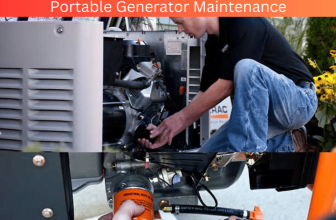Portable generators are convenient and useful devices to own yet they come with their own set of complex problems. The task of properly maintaining them can be particularly frustrating for users who frequently encounter technical difficulties.
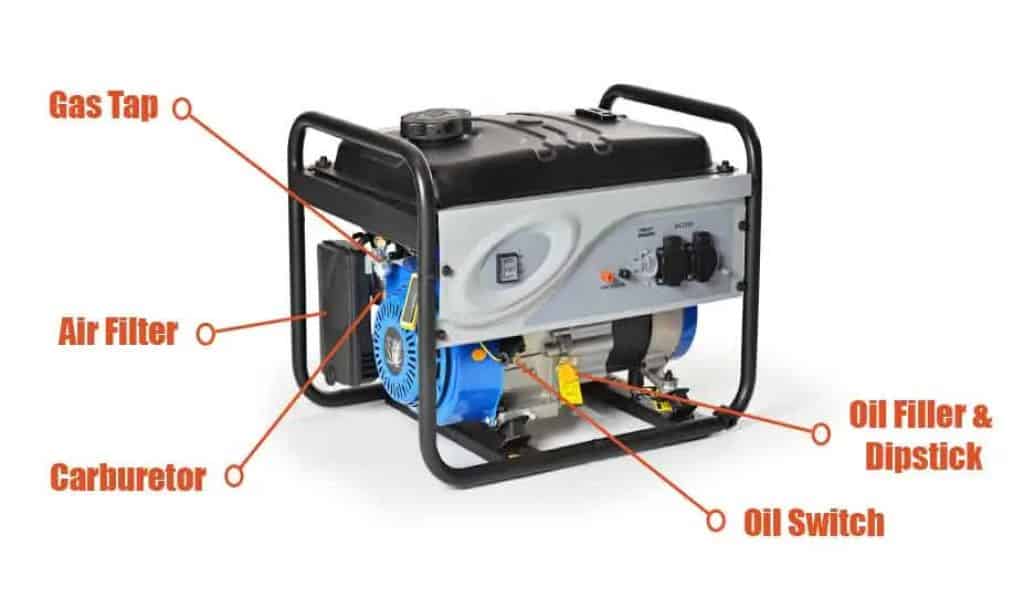
However, it is worth noting that some solutions exist that can help you quickly and easily overcome these common problems and issues so long as you know how to proceed. That said, in this article, we will explore some of the most common problems generator owners experience alongside practical solutions for resolving them with remarkable speed and ease.
By following our guidance here today you will acquire invaluable know how on how your device works plus every necessary tool for effective troubleshooting in any situation imaginable!
Generator Oil Maintenance
You know that feeling when you’re in dire need of using your portable generator but it just won’t start? Fret not! Often times a simple maintenance check will do wonders for getting things back on track.
Start by checking your oil levels!
Locate your generators dipstick and clean it with either a rag or paper towel. Reinsert then yank out again to review its current level. If low then top up with high quality oil meant specifically for your particular model so that your engine runs smoothly over time.
After adding more oil until between those two marks on its stick, secure cap tightly before running engine for no more than several minutes whereby sufficient time should have lapsed allowing all circulating components inside said item ample opportunity to operate optimally. Due diligence like this reduces stressors which normally arise concerning portable generators.
Fuel system inspections are next up on our maintenance list but first have you checked your oil levels yet?
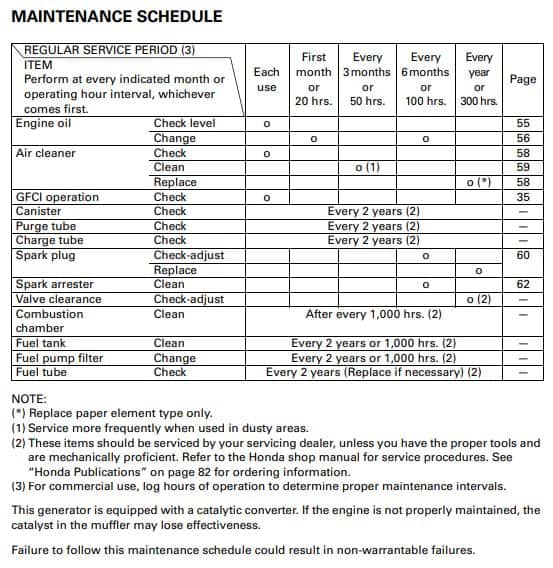
Checking The Fuel System
The effective operation of a portable generator hinges on its functional fuel system, otherwise, you’re looking at a device that won’t run at all! In this write-up, we’ll discuss some possible causes for potential problems with your machine’s fuel system.

The primary area of focus should be an assessment of your reservoir tank – check for anything blocking it and clear out any trash that may obstruct its vent opening or other parts within it. Also, drain out any water present in there too! Move on next to check if there are clogs or debris in your filter screen which may hinder flow. Utilize compressed air canisters to eradicate obstructions from filters, and where necessary replace them altogether! To keep your device running smoothly, confirm whether you have ample fresh gasoline by assessing levels in its reservoir. Refill using high-grade petrol formulated explicitly for generators where needed.
Bear in mind always: only use new gas since using old petrol can significantly harm machinery functioning before proceeding to addressing ignition challenges.
Troubleshooting The Ignition System
With the fuel system checked and functioning optimally, let us now inspect the ignition system for any possible hitches. This is an essential part of your generator that cannot be overlooked since its proper functioning is what ensures that your machine starts up.
The very first step towards troubleshooting this system is assessing if you have good spark plugs and if they are gapped correctly. If by chance you notice wear out on your spark plugs or if their gaps are incorrect, replacing them with new ones would be advisable at this point in time.
Additionally, carry out an examination for any signs of damage or wear and tear on the wires connecting those spark plugs – anything looking worn should immediately be replaced. However, if everything seems perfect but you’re yet to get your generator running still then it may require cleaning of the carburetor.
A dirty carburetor has been known to cause misfires or even prevent machines from starting altogether. Undertake maintenance for that part accordingly. Finally, when all other checks don’t seem to make a difference in starting up your unit then perhaps it might have something to do with the starter motor.
Often located nearby the engine area this comprises two key components which are an armature and a solenoid type switch. Before proceeding with examining your portable generators electrical system, it is essential to check all required parts for problems like malfunctions or damages thoroughly. In case of anyproblems detected, don’t delay replacing them right away for optimal performance. With this task complete you’re now ready to assess the devices electrical system thoroughly!
Inspecting The Electrical System
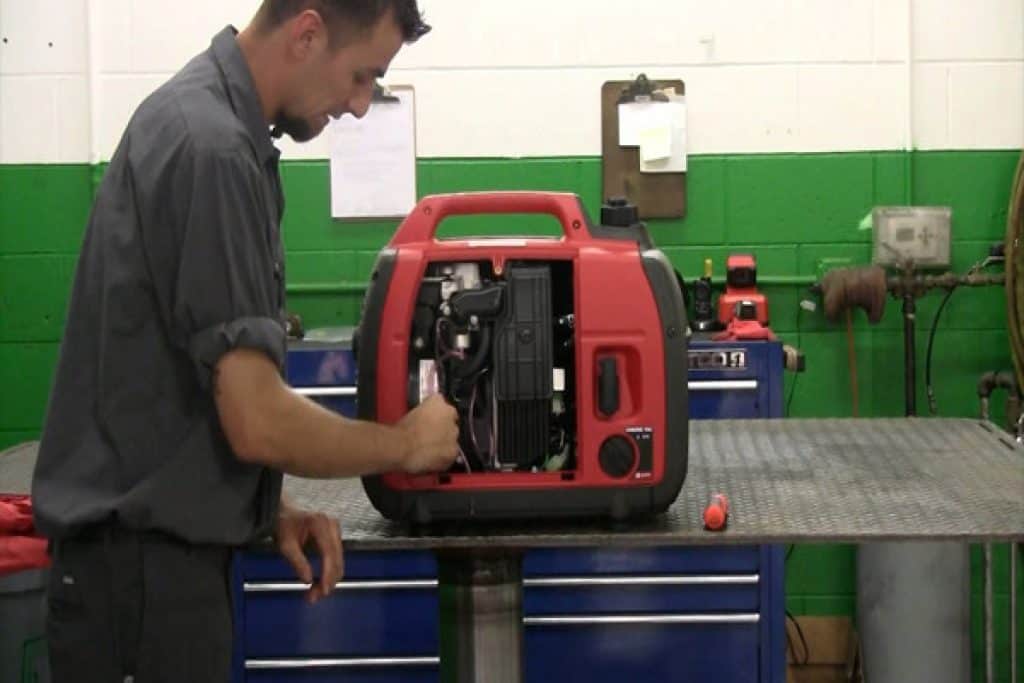
While basic troubleshooting for portable generators may be useful knowledge for most people, taking it further by checking out their electrical systems can significantly improve performance levels. A thorough inspection of wiring and components is necessary for ensuring an optimal running machine. Wiring ensures proper continuity within the generator while fuses act as safety measures against sudden power surges or overloads.
Circuit breakers play their part by instantly switching off during instances of electrical overload.
Before diving into any technicalities with respect to wires or other parts, remember to disconnect all sources providing electric power first – not doing so could put both you and your generator at risk of damage. Optimal performance requires us to ensure that every part of our equipment is securely attached and operating efficiently.
Neglecting broken pieces or frayed wires can result in dire consequences down the line, hence, it is important to address them promptly. Moving forward lets focus on replacing any worn out elements before resuming our generator operations after taking care of its electrical system earlier.
Replacing Worn Parts
If you want your portable generator running smoothly over time, swapping out worn parts frequently should be at the top of your maintenance list! Waiting until something breaks or fails before taking action can result in much bigger headaches down the track. Preventive action is always better than reactive action when it comes down to it!
Replacing important components requires attention. Make sure you’re purchasing an exact replacement part and ensure it is compatible with your generator model. Don’t forget to read any accompanying instructions that come with the part too. When in the replacement process if you’re unsure about anything, reach out for professional help! With all necessary parts working together well you’ll hopefully avoid any costly repairs and extend the operating efficiency of your generator!
Next up, let’s tackle a critical aspect of maintaining your portable generator – cleaning the air filter. Neglecting this step could lead to potential problems down the line.
Cleaning The Air Filter

When discussing portable generators, one important aspect often overlooked is the condition of their air filters. If not cleaned regularly, an unclean air filter will eventually become clogged with debris causing long term damage to the engine – something nobody wants! Luckily, though cleaning it up is actually quite easy if done properly.
Begin by locating the air filter in question before unscrewing it using your trusty screwdriver for removal from its housing. Inspect the filter thoroughly for any signs of damage or blockages and use a soft brush or cloth to clear away any dirt.
Once cleaned purchase a new replacement filter of the same size at most hardware stores or online retailers. Install this new one securely into its housing with your screwdriver before ensuring everything is tightly secured in place. In no time your generator will be up and running smoothly once again.
Remember though, regular maintenance is key when it comes to air filters. Aim to check on yours every few months so that you’re always aware of its condition and can act accordingly if necessary.
Next up we’ll uncover the significance of generator loads and their role in determining performance efficiency. Getting a solid grasp on this concept is crucial for achieving optimal outcomes.
Managing a portable generator entails understanding its load requirements to facilitate seamless operation. Even though a generator’s size and capability determine its power output level, how well it handles these demands can create problems if there are missteps. To get the best from your device, let’s learn what you need to know about managing its load requirements.
Consider this table highlighting various types of loads and their impact on your gadget:
| Type of Load | Purpose | Effect on Generator |
|---|---|---|
| Resistive | Heating & lighting | Generates minimal heat |
| Inductive | Motors & compressors | Generates more heat |
| Capacitive Sensors & electronics Can cause voltage drops |
Keep in mind that resistive loads generate less heat within generators than inductive or capacitive ones. However, proper connection handling for all three is crucial towards optimizing operational efficiency and safety while your portable generator is in use. Running multiple devices off of a single portable generator can be incredibly convenient – but only if proper precautions are taken.
One such precaution? Keeping an eye on total current draw.
A good rule of thumb is to make sure that all connected appliances don’t collectively exceed the generators rated output. This will prevent everything from overheating and breaking down – or worse yet catching fire. But how can you know what kind of current draw you’re dealing with? Easy! Simply assess each devices individual power needs and add them up to get a sense of how much total output your generator will require.
Armed with this knowledge you’ll be in a better position to avoid any potential problems. As always, it is important to stay vigilant during use of your portable generator. Keep an eye out for problems and address them proactively before they become major headaches!
Checking The Battery
In case your portable generator isn’t behaving well taking a peek at the battery is always a wise place to start.
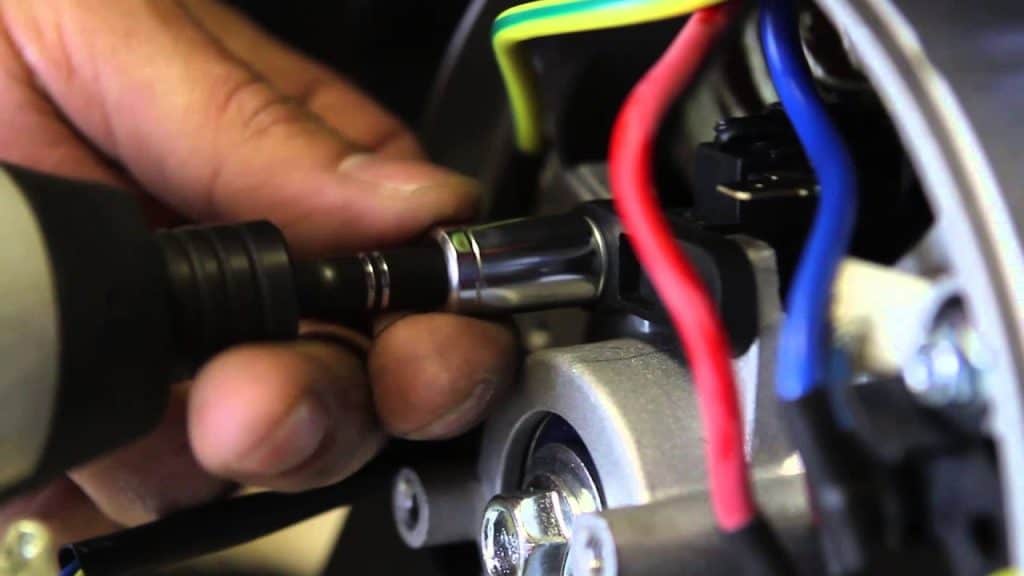
To kick things off, inspect the links between the battery and terminals thoroughly. Make sure they’re tightly secured without any signs of corrosion or debris whatsoever. If there are problems with connectivity cleaning up the terminals or substituting them with new batteries would prove helpful solutions. Following this initial inspection comes conducting tests on your battery using either voltmeters or multimeters – instructions for which are readily available online.
Your tests should check both voltage as well as ‘cranking’ amps. Lower readings than expected suggest that it might soon be time for a replacement battery! However if these readings come back alright yet your generator still isn’t starting up, leave it plugged overnight into particular charger meant for batteries. Once done, move onto replacing/inspecting spark plugs- an indispensable facet of ensuring smooth operation of your portable generator.
Testing And Replacing The Spark Plug
Is peak performance on top of mind for your portable generator? Then testing and replacing its spark plugs periodically should be on top of table too! The reason being: failing or damaged plugs can hamper its overall efficiency and power output. Let us dive into understanding how to solve problems in this department. First order of business: removing the spark plug from your engine (if you’re unsure how consult your trusty user manual).
Once out, inspect it carefully for any indications of wear and tear like visible damage or corrosion. If you spot these signs then its time to swap it with a compatible new one that suits your generator model.
After acquiring a matching spark plug, install it back into the engine using the same steps used when extracting the old one. After things are connected and tightened up correctly restart your generators engine again! With a bit of luck, the troubleshooting techniques detailed earlier ought to have effectively sorted out any complications arising from your spark plug.
Our attention will now shift towards rectifying voltage irregularities and other problems and maximizing the efficiency of your portable generator once again.
Resolving Voltage Problems
When a portable generator starts failing on you its more than just an inconvenience, particularly if you’re someone who prioritizes quality education from university level institutions. To ensure smooth operation and address common problems related to these machines effectively – understanding voltage problems becomes imperative. Most voltage related problems arise from either incorrect connections or malfunctioning components within the machine itself.
To get things back on track, start by checking both ends of the connection before moving forward. Firstly, ensure that your power cord on generator side is securely plugged in. Then move towards identifying any loose connections or faulty wiring at receiving end. Additionally, consider shutting down any other electronics connected while troubleshooting to prevent further complications.
Before connecting anything else to your generator after fixing voltage related problems, always test its output using a multimeter. With this precaution in place, you can use your unit confidently without worrying about unexpected hiccups along the way.
Maximizing your portable generators efficiency is crucial if you want to get optimum results from its use every time. Fortunately, there are several simple yet effective steps you can take towards achieving this goal without much hassle or technical know how required.
First up, ensure that you have securely plugged in the power cord on your generators side. Loose connections should be avoided at all times! Secondly (and equally important), inspecting both ends of your generator for faulty wires or other abnormalities could save you from costly repairs down the line- pay attention! Conducting voltage tests using a multimeter before connecting appliances could also prevent dangerous situations from occurring during use – safety first!
Finally, keep an eye out for low oil levels; regular refilling will keep your machine chugging along smoothly.
Frequently Asked Questions
How Often Should I Use My Portable Generator?
Say goodbye to problems associated with operating your portable generator! With proper utilization based on your needs and some routine maintenance practices utilizing this device can be far from burdensome.
For those who don’t rely on generators frequently except for emergencies or occasional power needs at work sites, powering tools and devices etc.- running the machine an hour per month should suffice.
However, for daily use and maximum efficiency its best to run it every day or two. This way you can ensure that you’ll have power when you need it without any hiccups along the way.
What Type Of Generator Is Best For My Needs?
If you’re in search of a portable generator that best suits your energy needs – there are some significant aspects to take into account before making such an important purchase decision.
The size and power output of the generator are vital factors that should drive your choice- alongside its fuel type.
For instance, smaller models with lower wattage capacities may suffice for outdoor activities like camping or tailgating events where portability matters most.
However, larger scale jobs like powering up an RV or providing electricity backup for appliances at home will require higher capacity units.
Moreover, choosing between gas-powered generators versus their propane alternatives will come down to ease of use and refueling convenience.
While propane models have their advantages, most people find gas generators easier to refill when necessary. Lastly, reliability is key when selecting a portable generator. Ensure it can satisfy all your energy requirements before deciding on one particular unit.
What Safety Precautions Should I Take When Using A Portable Generator?
Your safety is paramount when utilizing a portable generator. To ensure that all goes well familiarize yourself with potential risks and take adequate preventative measures.
Go through the owner’s manual meticulously while following all guidelines exactly as described.
Keep a carbon monoxide detector handy in case of emergency and be sure to maintain a distance of at least 20 feet from any doors or windows with regards to placement of the generator for safety reasons.
More so, always allow sufficient cool down time (at least two minutes) before refueling by turning off your engine first! As an important final note: never attempt plugging into a home outlet as doing so can lead you down a path of electrocution or severe power surges that could harm appliances beyond repair!
How Do I Store My Generator Safely?
Ensuring that your generator lasts for years involves proper storage techniques that guarantee its safety. Begin by turning off the generator and unplugging all appliances before cleaning it thoroughly for dirt or damages such as frayed wiring or loose connections- these should be fixed promptly before storing the equipment away.
The next step is to find an ideal space free of flammable materials like gasoline or paint where temperatures are cooler and less prone to moisture buildup while covering up with either a tarpaulin sheet or plastic cover will protect against dust particles and debris accumulation which could cause severe damage over time.
What Is The Best Way To Transport A Portable Generator?
Moving around with a portable generator can be somewhat of a daunting task.
It is vital that you safeguard its safety and keep damages at bay until delivery time by employing appropriate care during transport.
Often regarded as the safest method of transporting this equipment would involve loading them securely within pickup trucks bed space.
Securing them using reliable ratchet straps or tie-downs assures their stability while on transit for hassle-free delivery upon arrival at your destination point securely. In instances where pick-up trucks are not available, use trailers equipped with efficient bungee cords or sturdy fasteners for added precautionary measures when transporting generators.
Conclusion
A portable generator is an ideal way to meet your power needs during power outages or off grid excursions. However, they do come with certain complications and prolems that need addressing beforehand.
It is essential to understand aspects such as how often you should operate the generator selecting one that serves your specific requirements well. Storing it safely or transporting it securely. In addition to taking necessary safety measures before using it properly, all play vital roles in optimizing performance while avoiding potential hazards and problems associated with its usage.
With basic comprehension and preventative efforts on hand beforehand you can prevent numerous common complications and problems while benefitting from limitless convenience offered by a portable generator.




